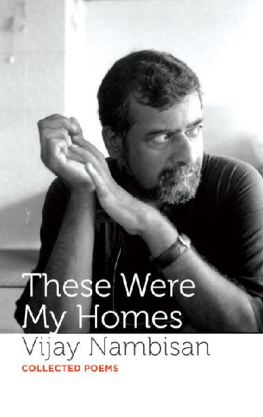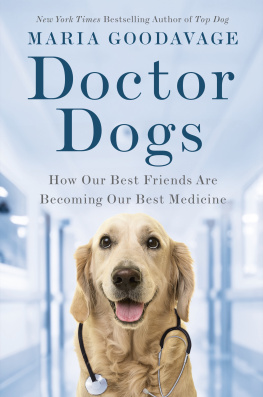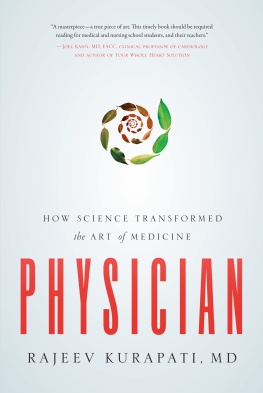Kavery Nambisan - A LUXURY CALLED HEALTH A DOCTOR’S JOURNEY THROUGH THE ART, THE SCIENCE AND THE TRICKERY OF MEDICINE
Here you can read online Kavery Nambisan - A LUXURY CALLED HEALTH A DOCTOR’S JOURNEY THROUGH THE ART, THE SCIENCE AND THE TRICKERY OF MEDICINE full text of the book (entire story) in english for free. Download pdf and epub, get meaning, cover and reviews about this ebook. year: 2021, genre: Home and family. Description of the work, (preface) as well as reviews are available. Best literature library LitArk.com created for fans of good reading and offers a wide selection of genres:
Romance novel
Science fiction
Adventure
Detective
Science
History
Home and family
Prose
Art
Politics
Computer
Non-fiction
Religion
Business
Children
Humor
Choose a favorite category and find really read worthwhile books. Enjoy immersion in the world of imagination, feel the emotions of the characters or learn something new for yourself, make an fascinating discovery.
- Book:A LUXURY CALLED HEALTH A DOCTOR’S JOURNEY THROUGH THE ART, THE SCIENCE AND THE TRICKERY OF MEDICINE
- Author:
- Genre:
- Year:2021
- Rating:5 / 5
- Favourites:Add to favourites
- Your mark:
- 100
- 1
- 2
- 3
- 4
- 5
A LUXURY CALLED HEALTH A DOCTOR’S JOURNEY THROUGH THE ART, THE SCIENCE AND THE TRICKERY OF MEDICINE: summary, description and annotation
We offer to read an annotation, description, summary or preface (depends on what the author of the book "A LUXURY CALLED HEALTH A DOCTOR’S JOURNEY THROUGH THE ART, THE SCIENCE AND THE TRICKERY OF MEDICINE" wrote himself). If you haven't found the necessary information about the book — write in the comments, we will try to find it.
Kavery Nambisan: author's other books
Who wrote A LUXURY CALLED HEALTH A DOCTOR’S JOURNEY THROUGH THE ART, THE SCIENCE AND THE TRICKERY OF MEDICINE? Find out the surname, the name of the author of the book and a list of all author's works by series.
A LUXURY CALLED HEALTH A DOCTOR’S JOURNEY THROUGH THE ART, THE SCIENCE AND THE TRICKERY OF MEDICINE — read online for free the complete book (whole text) full work
Below is the text of the book, divided by pages. System saving the place of the last page read, allows you to conveniently read the book "A LUXURY CALLED HEALTH A DOCTOR’S JOURNEY THROUGH THE ART, THE SCIENCE AND THE TRICKERY OF MEDICINE" online for free, without having to search again every time where you left off. Put a bookmark, and you can go to the page where you finished reading at any time.
Font size:
Interval:
Bookmark:
Kavery Nambisan was born in Kodagu district, Karnataka. She did her medical studies at St Johns Medical College, Bangalore and her higher surgical studies in the UK. After obtaining the Fellowship of the Royal College of Surgeons (FRCS) from London, she worked predominantly in the rural parts of Uttar Pradesh, Bihar, Tamil Nadu and Karnataka. She has also worked as a governing council member of the Association of Rural Surgeons of India.
She has written seven novels, including The Scent of Pepper, The Story That Must Not Be Told and A Town Like Ours. She has also written several books for children. This is her first long non-fiction work.
Kavery was married to the poet and writer Vijay Nambisan. She lives and works in Kodagu district and can be reached at kavery.

Doctors and Patients:
For you
Because of you
Fortunately, when religion was strong and science weak, men mistook magic for medicine; now, when science is strong and religion weak, men mistake medicine for magic.Thomas Szasz; The Second Sin
Contents
Introduction
As I prepare to let go of this book, I realize with dismay that I have spent a major portion of two decades convincing myself of its needlessness. I like medical work, and I like writing fiction. But I find it hard to summon the enthusiasm required to put down large chunks of my life into words that others might read. It does not permit me to imagine stories and create characterswhich I love doing. There is also the fear of what self-examination might yield.
By way of introduction, here is an unsettling scene from Dostoevskys The Brothers Karamazov, a novel I read every few years. There is one scene in the novel where a boy, Ilyusha, lies terminally ill in bed in his impoverished home. The father is trying desperately to save him, his physically disabled sister and their mother who is a melancholic neurotic. Through the noble efforts of a rich woman, a reputed physician has arrived to see Ilyusha.
The doctor enters their home, making obvious his distaste and scorn for the job at hand; he does a cursory examination of the boy and walks out. At the doorway stands the father: questioning, pleading with his eyes for a miracle that will save his son. The doctor is irritated by the poor, cringing man. With elaborate sarcasm he proclaims that since it is a very serious condition, it would be best to take the boy to Syracuse, in Sicily, for convalescence. He adds that the physically disabled daughter should be taken to some place in the Caucasus and his wife to a famed psychiatrist in Paris. He knows full well that it is beyond their means and yet he cruelly recommends it. His advice can only make Ilyushas father feel that he is not doing enough.
Kolya, Ilyushas friend, is waiting outside, as anxious as the family. He has heard the physician, sized up the situation and is furious. Here is how the scene plays out when the father hears the doctors suggestion:
Doctor! Doctor! Dont you see? he exclaims, pointing to the bare log walls of the house.
Ah, that is not my business, the doctor grins. I have only said what science can say to your questions. As for the rest to my regret He looks uneasily at the dog Perzivon which is waiting at the doorway with Kolya.
Dont worry, Leech, my dog wont bite you! cuts in Kolya, abruptly. (Later, Kolya declares he used the word leech instead of doctor purposely, and meant it as an insult.)
The doctor, flabbergasted, is unable to give a fitting reply. Kolya continues to address him as Leech. Shamed and irate, the doctor climbs into his ostentatious carriage and slinks away.
I have merely given a window-peeps description of the fictional scene so powerfully described a century and a half ago. It is perhaps not the image of the quintessential doctor. But it provokes reflection upon a craft which entitles qualified doctors to attempt the cure, or at least the amelioration of the misery caused by sickness. Our profession itself merits selfexamination and I have taken on the uneasy task of attempting to portray it. What follows is coloured by my own experience, backed by observation and collected detail. For the positives and the negatives of the telling, I take the credit and the blame.
*
My training has been solely in Western medicine, or Allopathy. It is based on the meticulous study of the human body, its chemical composition, the physics, the geometry of alignment and the organization of organs into systems which function in accord with each other. This is followed by the study of the why and how of every disease, and the ways in which we can set it right.
Claude Bernard, the 19th-century French physiologist, wrote a treatise describing the milieu interior or the inner harmony of the body and its ability to adjust to a changing external environment. The lungs receive oxygen from the atmosphere and deliver it to the heart; the heart pumps oxygenrich blood to every organ; the digestive system breaks food into simple molecules which dissolve into the blood stream to provide energy; the brain sends messages through its neural network, signalling us to act in different ways.
The body is a finely tuned instrument which must also make constant, delicate alterations to suit the rhythm of the outside world: the skin adjusts to external heat and cold by controlling the blood flowing to it, ensuring that it can cool off or warm up quickly. This is similar to a thermostat which controls the temperature in a room or building. The ability to maintain this balance, within and without, is the milieu interior of Claude Bernard. In other words, homeostasis, that is common to all forms of life. The American physiologist W.B. Cannon described it as the wisdom of the body. If homeostasis is maintained, there is life. If it is disrupted, there is disease, perhaps death. We see this mechanism in all of naturein every atom, cell, molecule, organ, organismin technology, and in communities. The computer is a standard example of several components operating in synchrony. As I type, it follows commands, and self-regulates within its metal framework while also reacting to my constantly changing fingertyped commands, or to an external disc or drive inserted into it for new functions like the playing of music or film.
Nature provides a seemingly perfect balance: the migration of birds, the hibernation of animals, the warming and cooling of different regions, the level of water in an open well are examples of homeostasis. Irregularities happen, resulting in periodic cataclysms: floods, drought, cyclones, forest fires, wars; or in the body, disease. This disruption is set right through the required adjustments which revive the dynamic equilibrium so essential to life. The inter-connectedness between Nature and all forms of life is mutually beneficial.
The human body, which can also be looked at as a part of Nature, is a marvel of creation. So are societiesgroups of people forming a community, a country, a republic like India, which is a created marvel of variety. Through the years it has suffered several episodes of ill-health and nervous breakdown. Some were serious, tragic, indelible disasters which left us scarred, but our republic succeeded in bouncing back to health every time. When the harmony of coexistence and mutual respect between people is eroded, society crumbles; when we cease to respect nature, misuse and abuse its bounty, the weather patterns change, resulting in natural catastrophes; when we abuse the equilibrium of the body, there is ill health and disease. All these factors might eventually decide the fate of the human race, and even that of every other form of life. Nature is not always perfectat times it is playfully imperfectbut the only demand that it makes on us is that we respect and retain the connections. Health, like security and peace, lies in maintaining harmony within and without. When health has been disturbed, doctors step in. It is their job to restore it.
Next pageFont size:
Interval:
Bookmark:
Similar books «A LUXURY CALLED HEALTH A DOCTOR’S JOURNEY THROUGH THE ART, THE SCIENCE AND THE TRICKERY OF MEDICINE»
Look at similar books to A LUXURY CALLED HEALTH A DOCTOR’S JOURNEY THROUGH THE ART, THE SCIENCE AND THE TRICKERY OF MEDICINE. We have selected literature similar in name and meaning in the hope of providing readers with more options to find new, interesting, not yet read works.
Discussion, reviews of the book A LUXURY CALLED HEALTH A DOCTOR’S JOURNEY THROUGH THE ART, THE SCIENCE AND THE TRICKERY OF MEDICINE and just readers' own opinions. Leave your comments, write what you think about the work, its meaning or the main characters. Specify what exactly you liked and what you didn't like, and why you think so.








